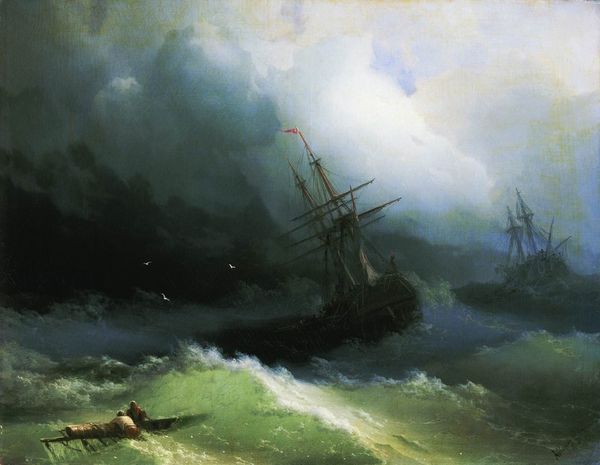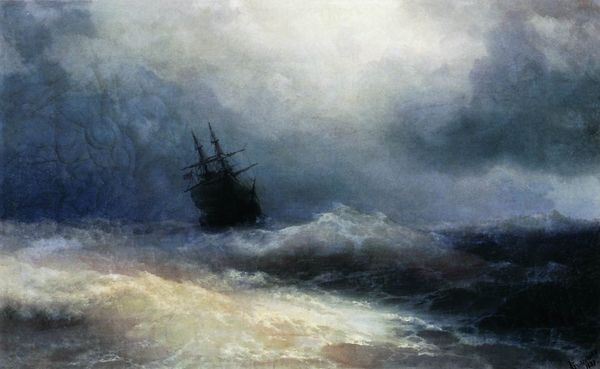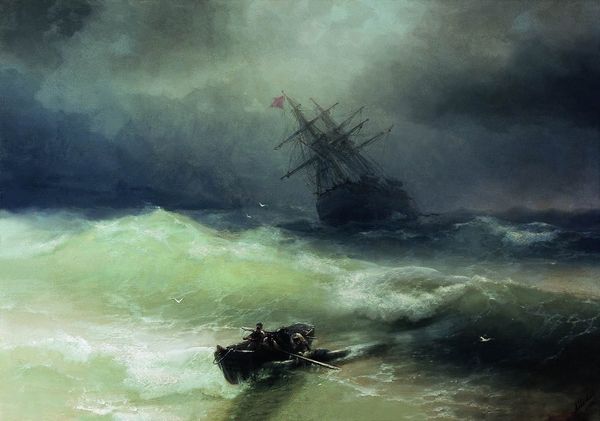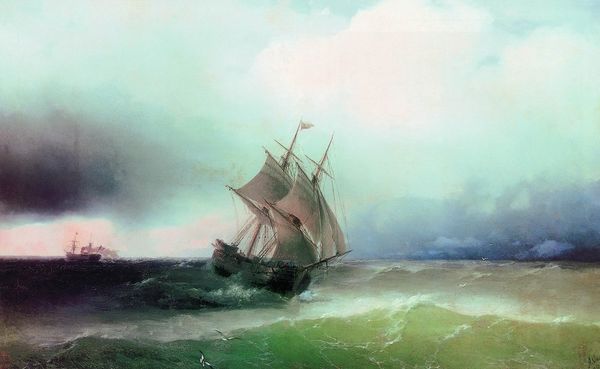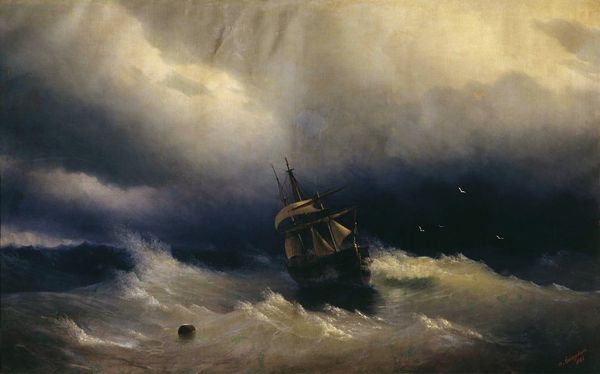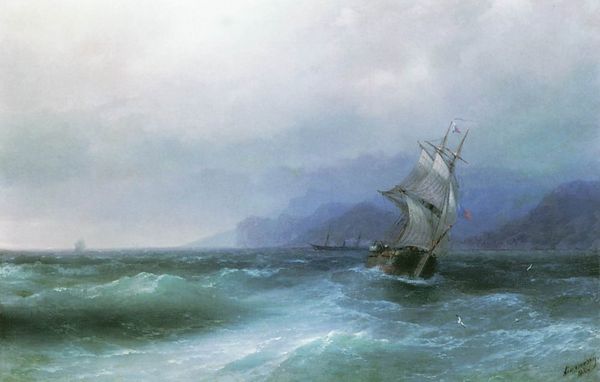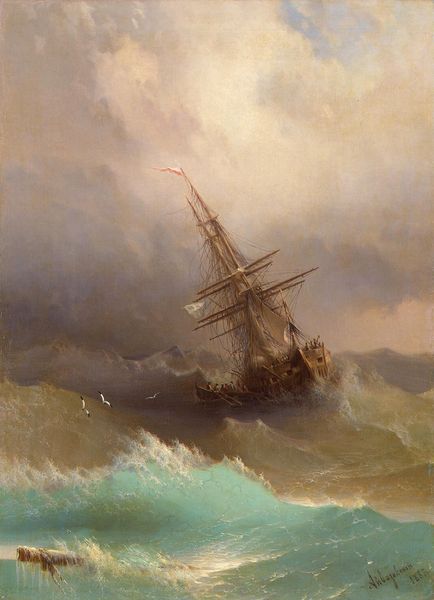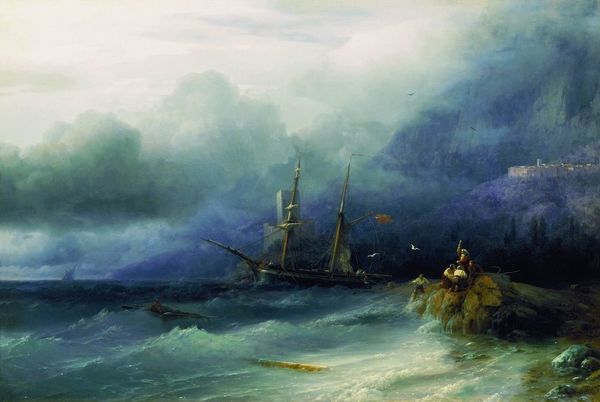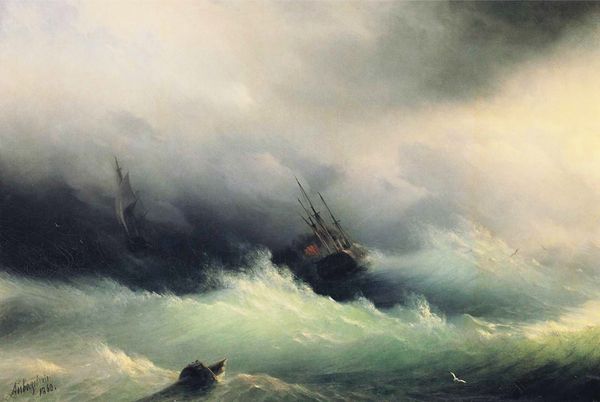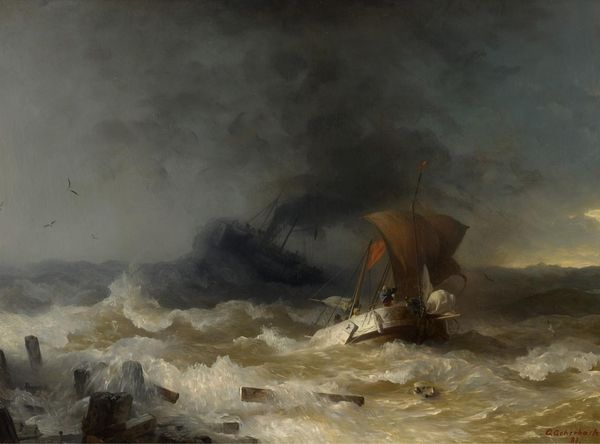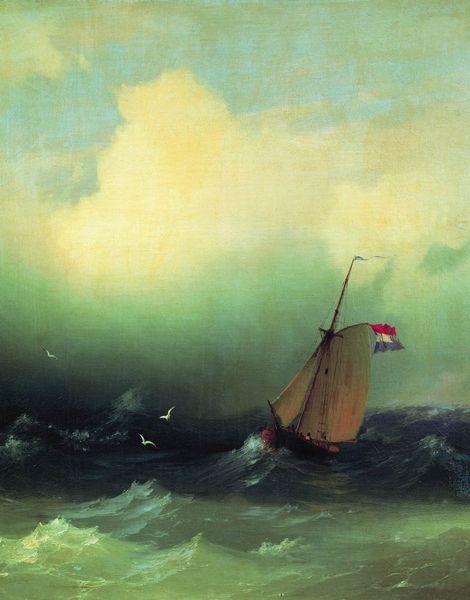
Copyright: Public domain
Curator: "The Tempest" painted in 1851 by Ivan Aivazovsky, is a classic example of Russian Romanticism. It uses oil paint to dramatically portray a ship battling a ferocious storm. Editor: The mood is overwhelming; the turbulent water feels ready to swallow the ship. Curator: Absolutely. Aivazovsky masterfully captures the sublime, evoking awe and fear. For many viewers the power of nature transcends even this seemingly massive vessel. Consider what the sea means as a potent symbol of both opportunity and danger, present since the dawn of human history. Editor: Thinking about the narrative, one has to wonder who is on this ship. Perhaps these sailors represent not just people, but societal structures and values overwhelmed by a historical storm of revolution, injustice, and inequalities? The ocean here can stand in for any systemic issue we navigate. Curator: Yes, the sea itself can take on multiple meanings depending on your viewpoint. This artwork aligns with Romantic ideals of powerful nature that carries immense cultural memory for seafaring cultures. In that time, the iconography of shipwrecks captured both nature’s brutality, but also society's ability to overcome any challenge. Editor: But where’s the societal reflection here? Is it truly triumphant, or just reflective of a patriarchal order ignoring those lost to the currents, drowned by the waves? We can't disconnect its aesthetic beauty from these darker undercurrents. Curator: Aivazovsky gives the viewer some choices in interpreting the scene. He balances his imagery between historical representation of naval power with symbols of the vastness and sometimes merciless energy that shapes culture. Editor: Indeed, “The Tempest” remains incredibly relevant. It challenges us to navigate through our storms and consider how to make our vessels truly equitable.
Comments
No comments
Be the first to comment and join the conversation on the ultimate creative platform.
